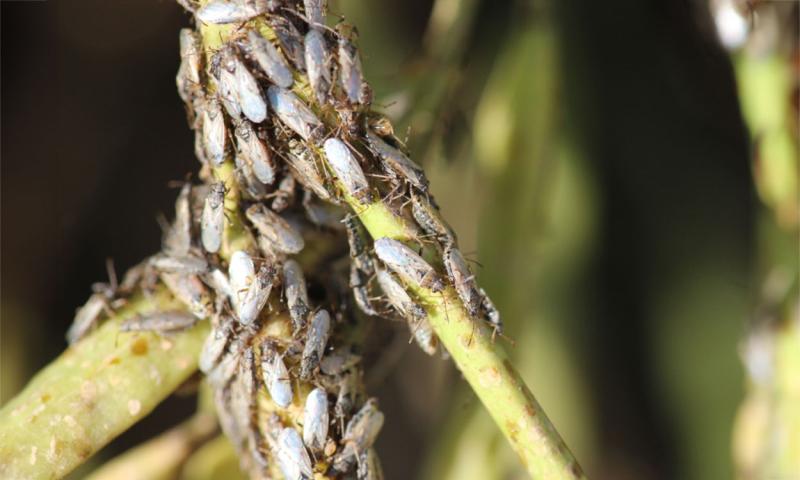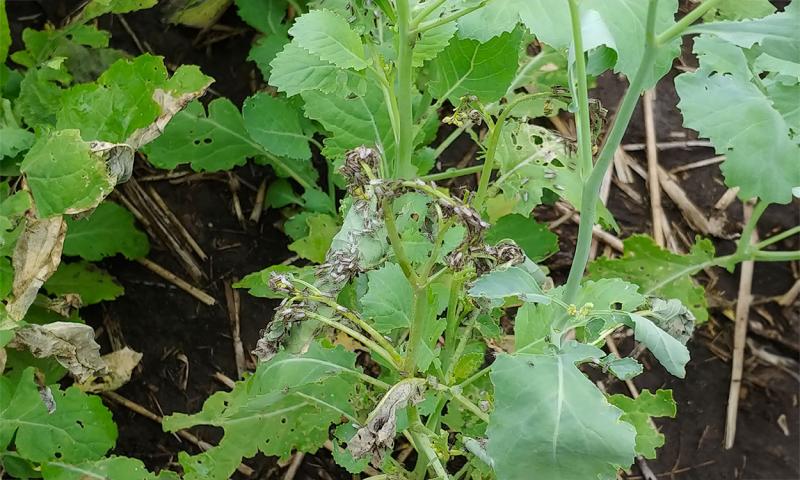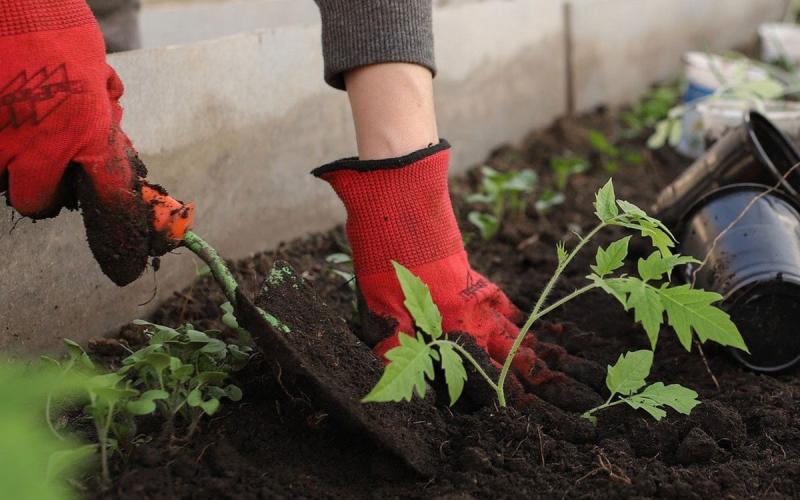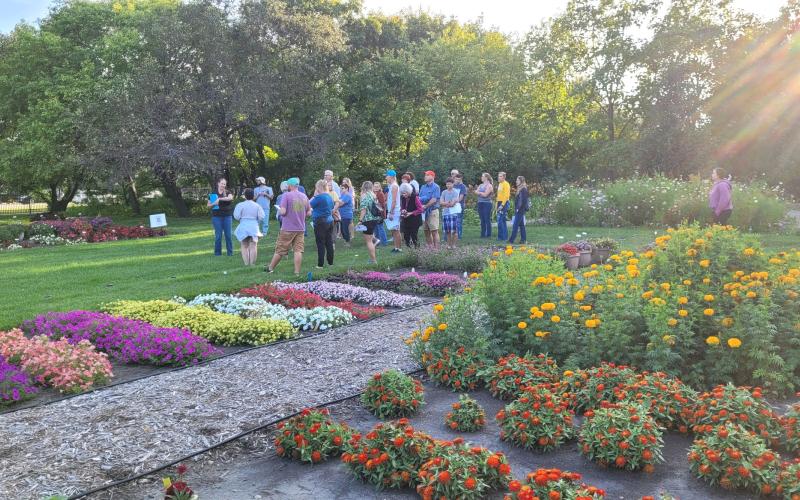Written collaboratively by Patrick Wagner, Adam Varenhorst, Amanda Bachmann, Philip Rozeboom, and Bradley McManus.
Originally Submitted: June 13, 2024
Within the past week, large populations of false chinch bugs have been reported across western South Dakota. Although they are normally only a nuisance pest, their populations can become magnified by cool, wet springs. The last time we observed a similar population boom was in 2019 when South Dakota received record precipitation totals. In 2019, false chinch bug activity initially started at the western edge of the state and pushed east. We anticipate a similar pattern to develop again in 2024. In high numbers, false chinch bugs can pose a threat to Brassica plants. These include field crops, such as canola and carinata, as well as garden crops, like broccoli, cauliflower, turnips, and cabbage.
Profile

Adult false chinch bugs are a grayish-brown color and about 1/8 of an inch in length (Figure 1). They first emerge from overwintering sites in grasslands and weedy fields. As these areas dry down, false chinch bugs eventually migrate to other landscapes in search of food. The adults lay eggs in the soil near Brassica plants, and nymphs hatch in about 4 days. Upon hatching, the nymphs will feed and mature into adults in 3 weeks. There can be several generations of false chinch bugs each year. On years when large populations are present, each generation can appear suddenly in a massive swarm, which is very overwhelming for growers and gardeners.
False chinch bug nymphs and adults feed by sucking the sap from plants. Injury appears as wilting on the upper leaves, causing them to turn brown with the edges becoming curled (Figure 2). Noticeable damage can occur within days on heavily infested plants. False chinch bugs are most active during the morning and evening hours. During the heat of the day, they will hide in the soil or underneath plants.
Management

Managing false chinch bugs is generally not necessary unless they appear in high numbers. Cool, wet springs encourage growth of weedy hosts and allow for rapid population increases. False chinch bugs are normally observed in crops during hot-dry periods due to the drying down of weedy hosts.
For canola, most of the injury occurs during flowering and early pod fill.
The thresholds for false chinch bugs are an average of 5 to 10 bugs on flowering raceme and 10 to 20 on racemes during early pod set. Once pods are filled, the false chinch bugs do not represent as much of a threat, and little damage is observed. If false chinch bug populations are above threshold, consider using a foliar insecticide.
In gardens, host plants (Brassica spp.) are often able to tolerate feeding with regular watering. However, injury to young plants may be more severe and will result in stunting. Applying pyrethrin or pyrethroid insecticide as a knock-down spray can help reduce false chinch bug populations and lessen their feeding impact. When using insecticides on garden plants, make sure to follow any preharvest interval instructions. For a more proactive approach, floating row covers may be used as a physical barrier to protect plants from harm. Row covers must be installed at planting to be effective – covering plants after they have been in the ground may trap the chinch bugs under the cover with the plants.


